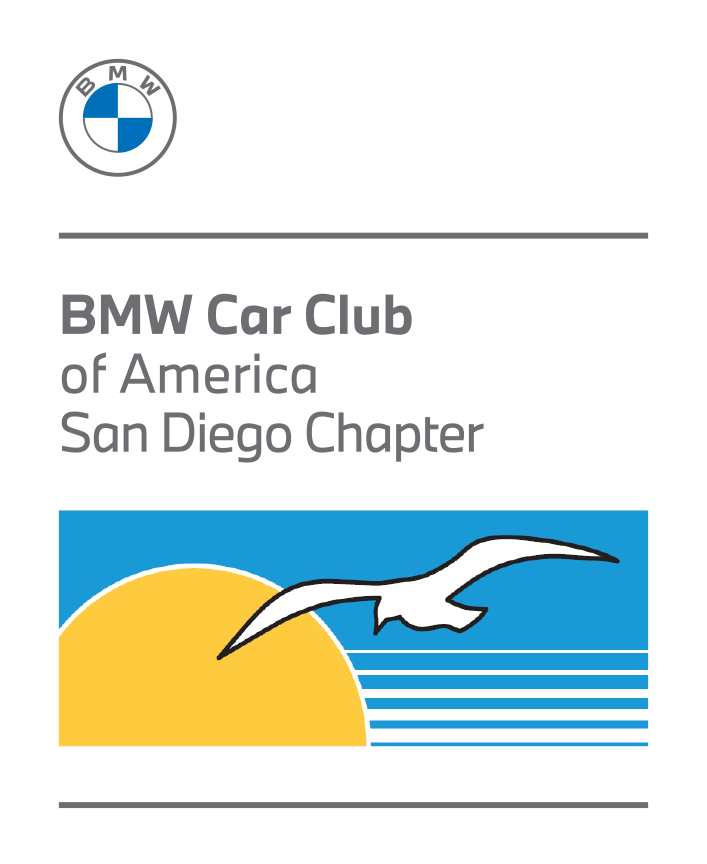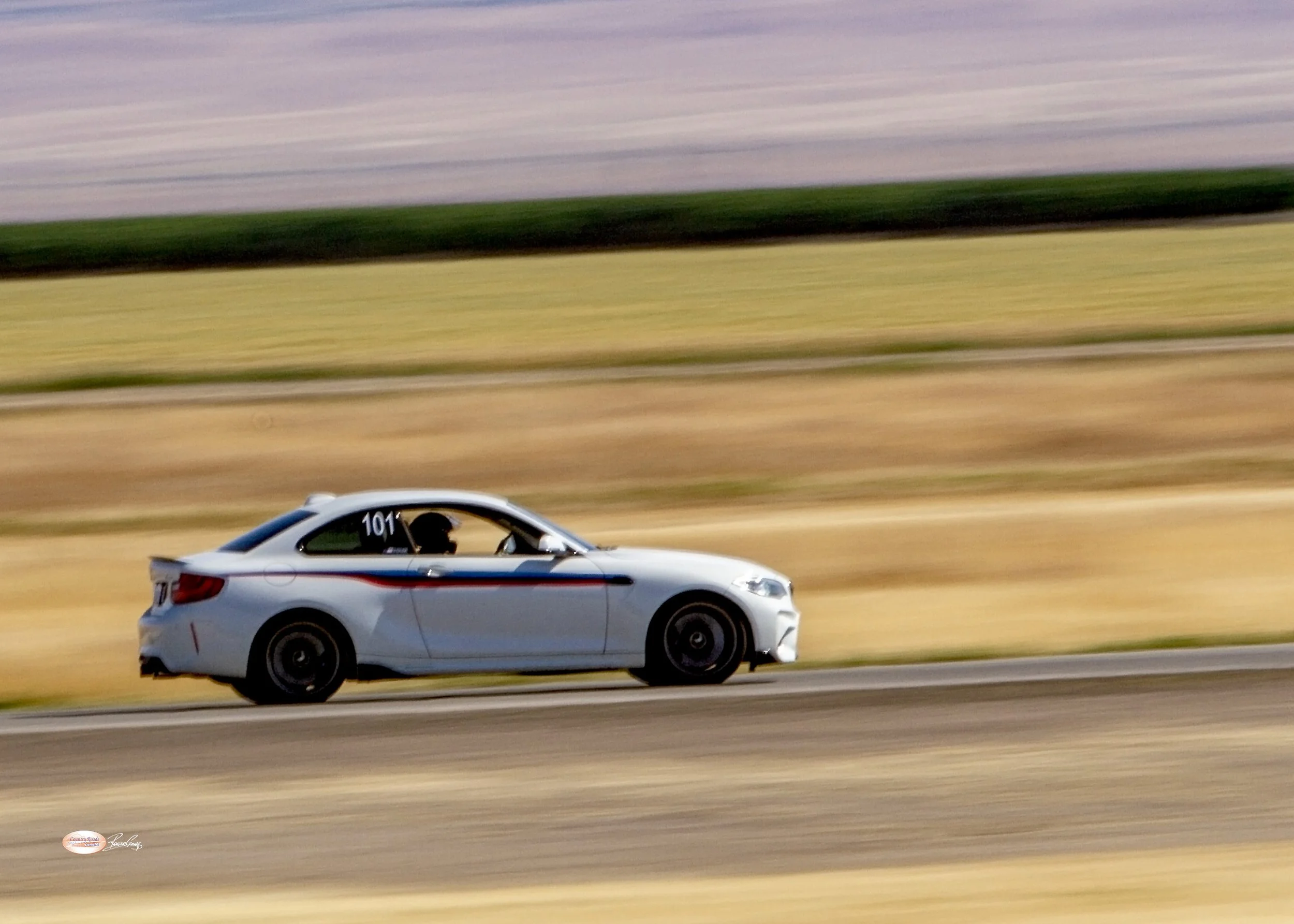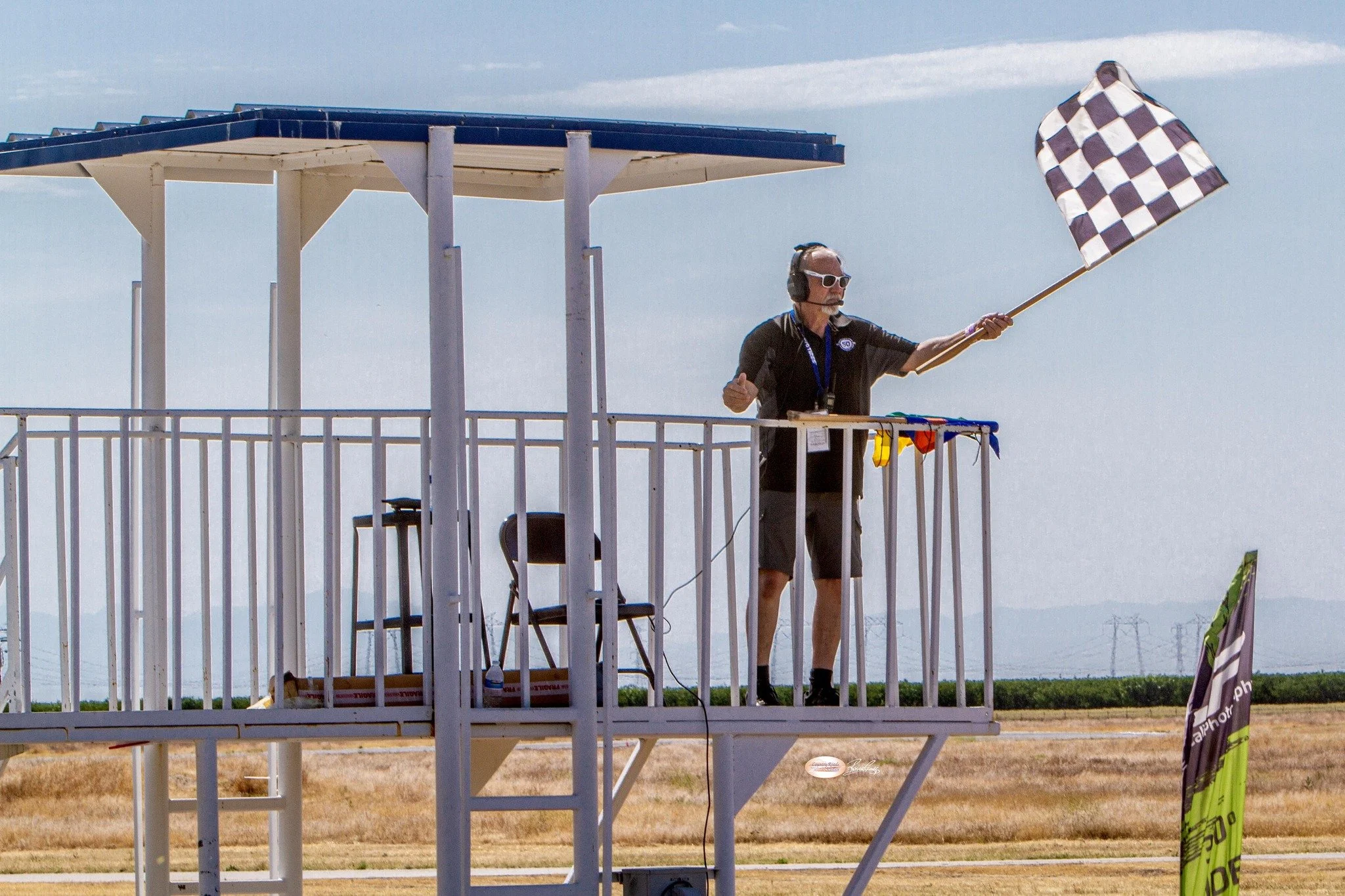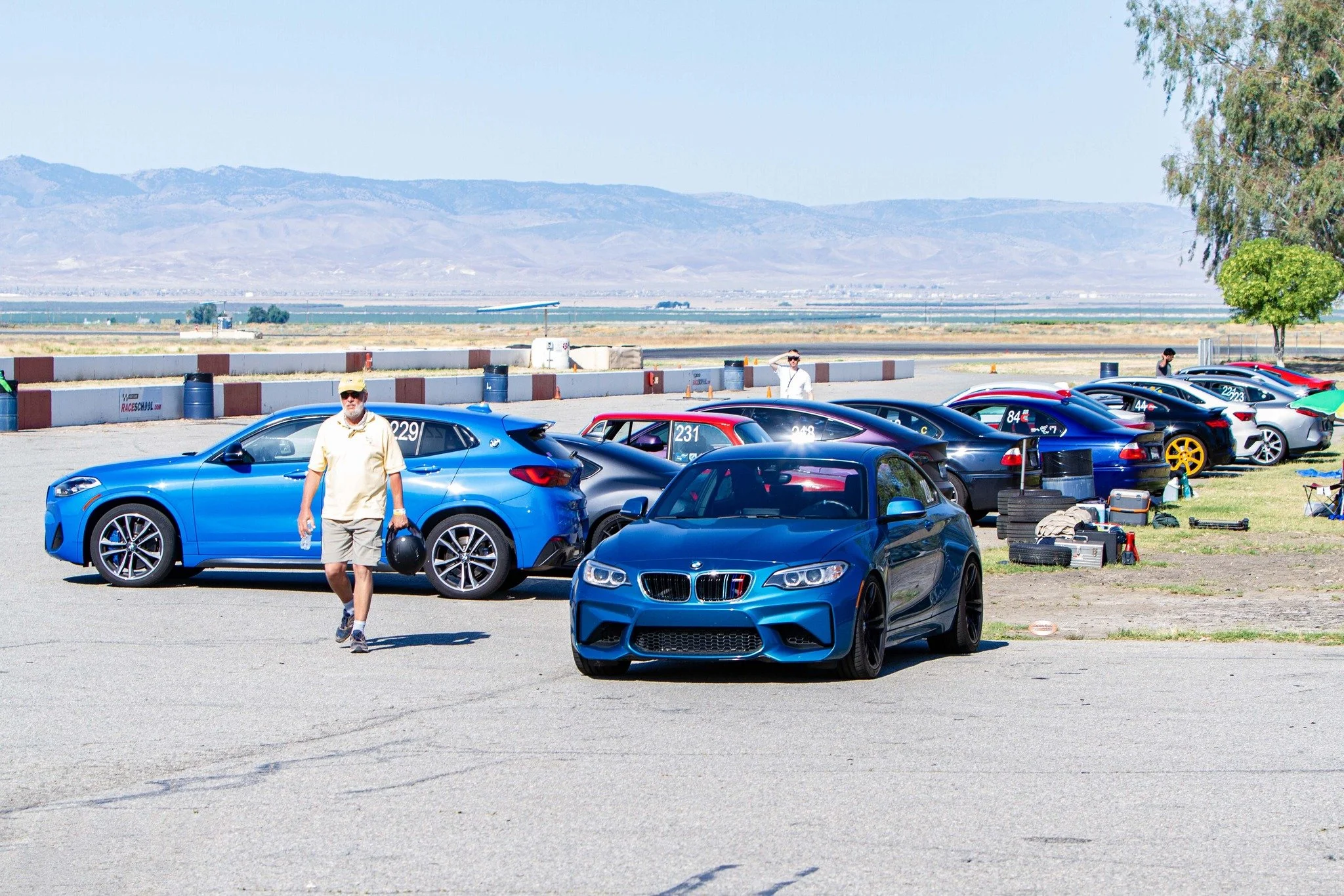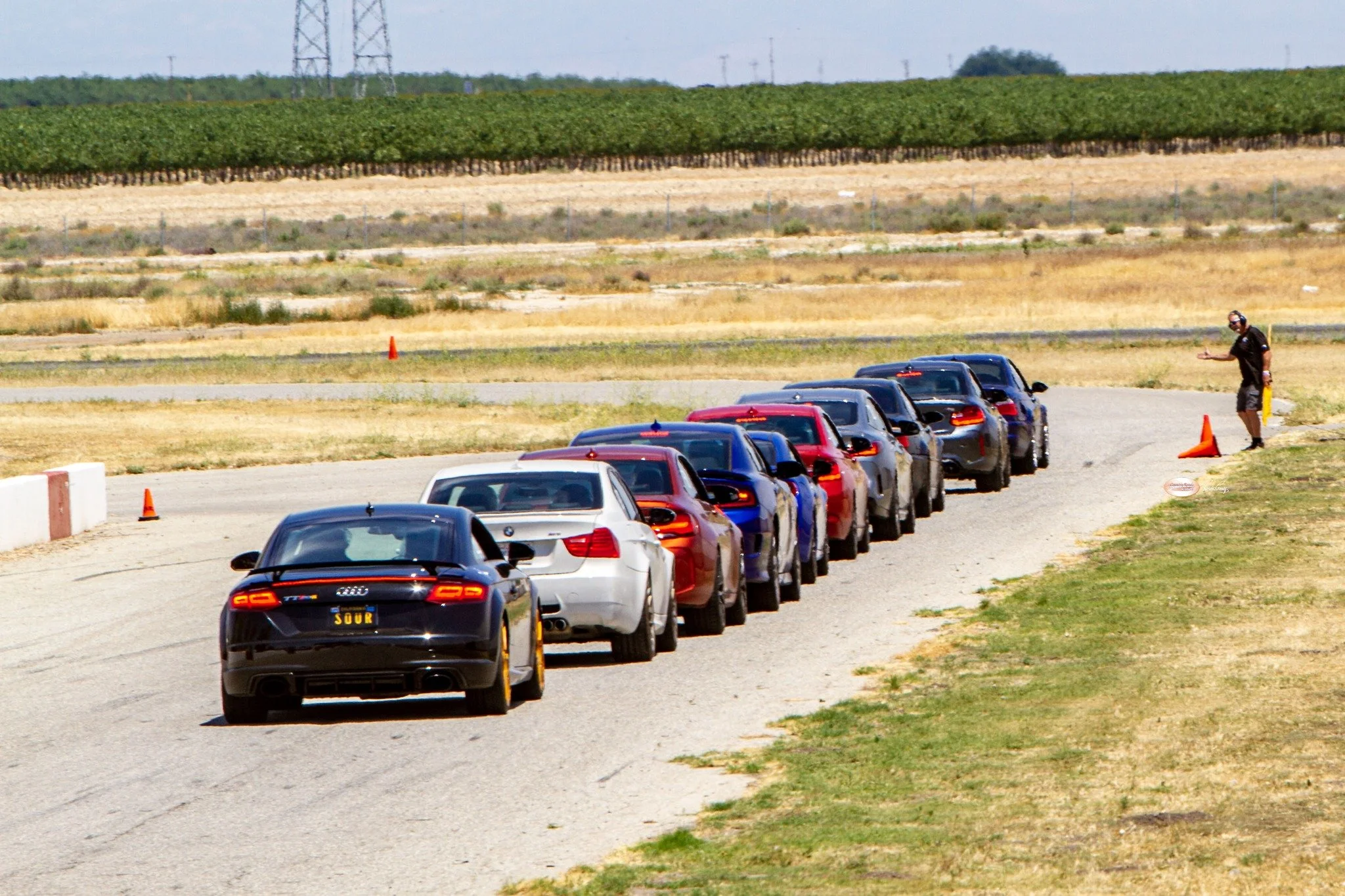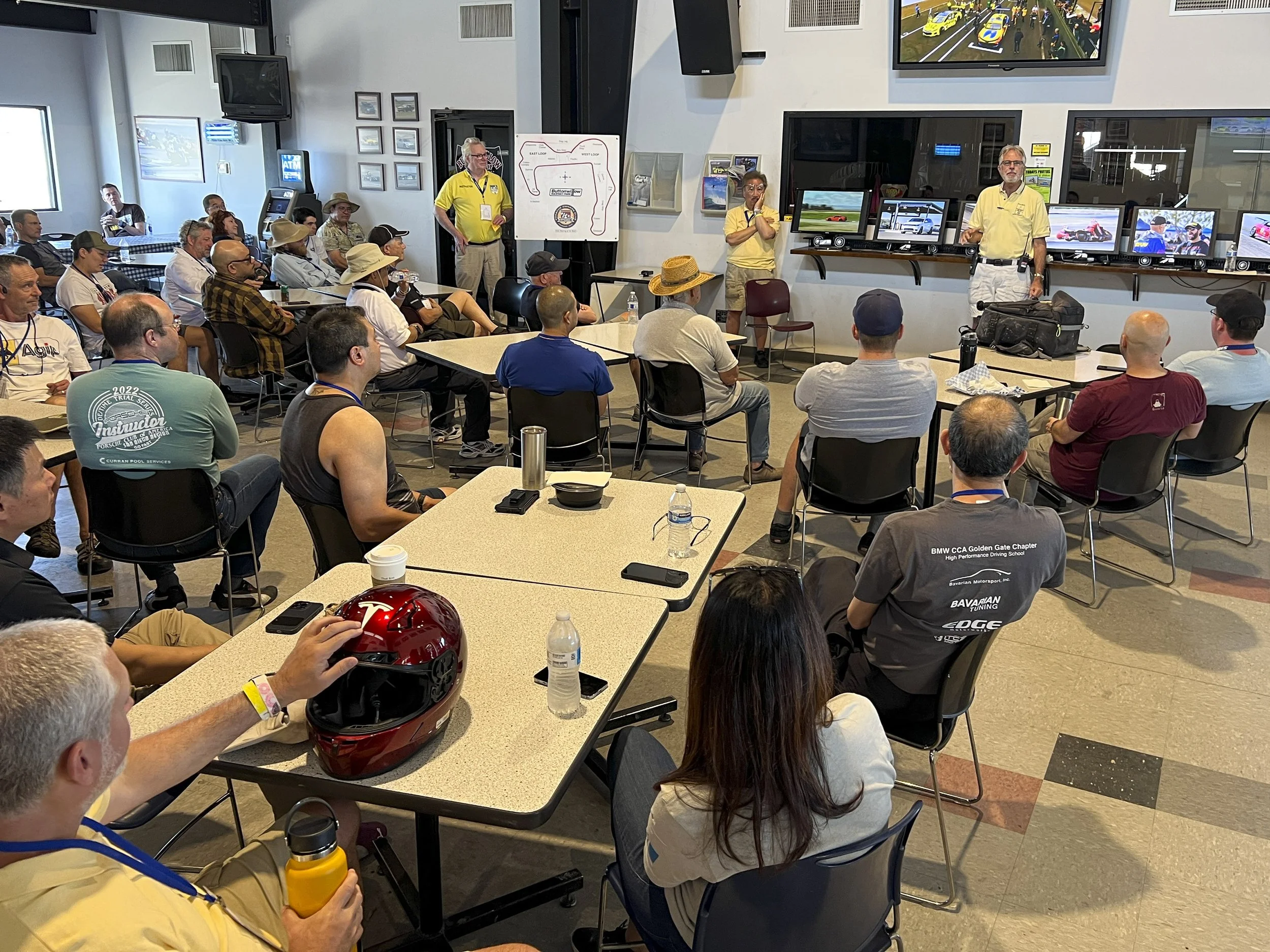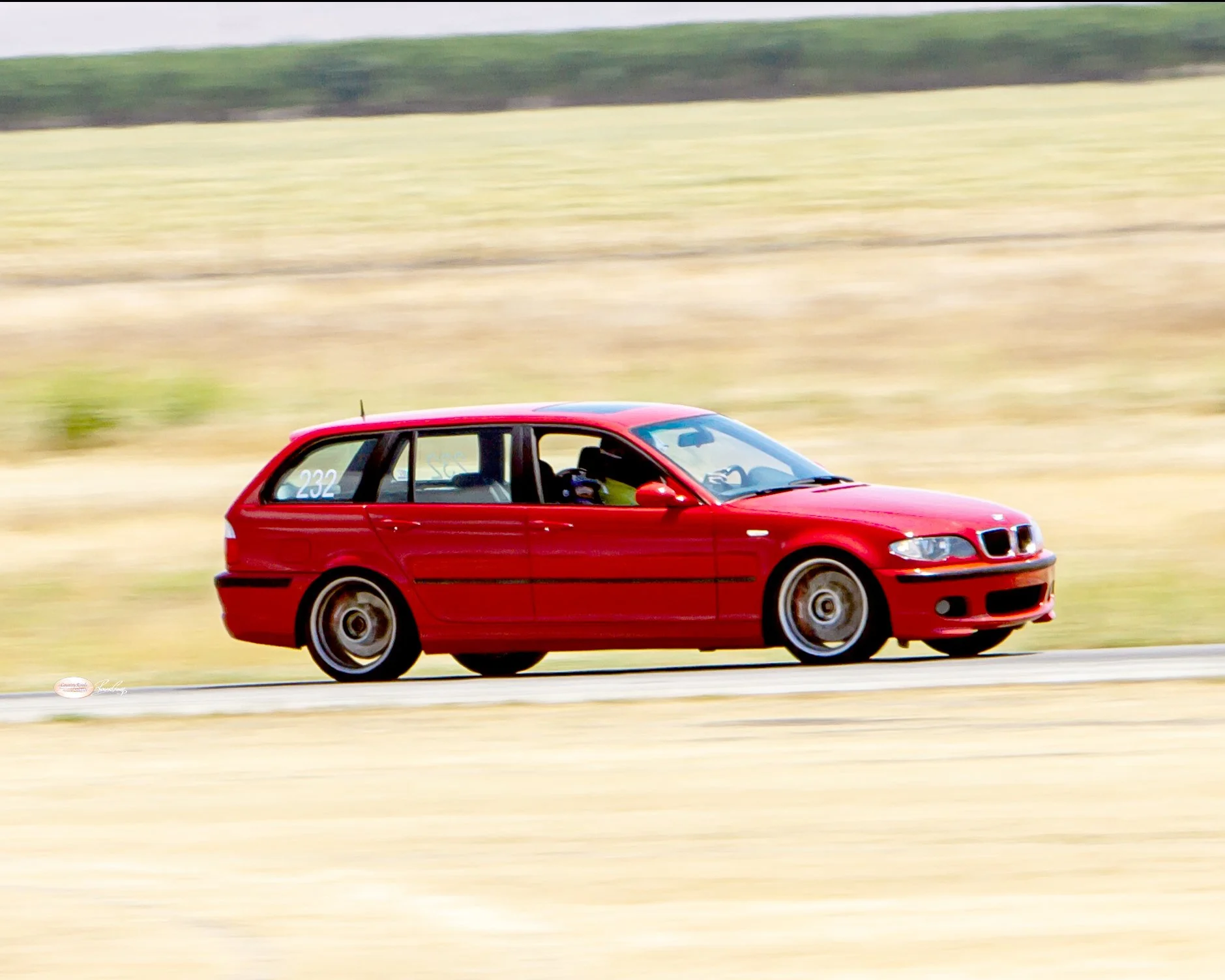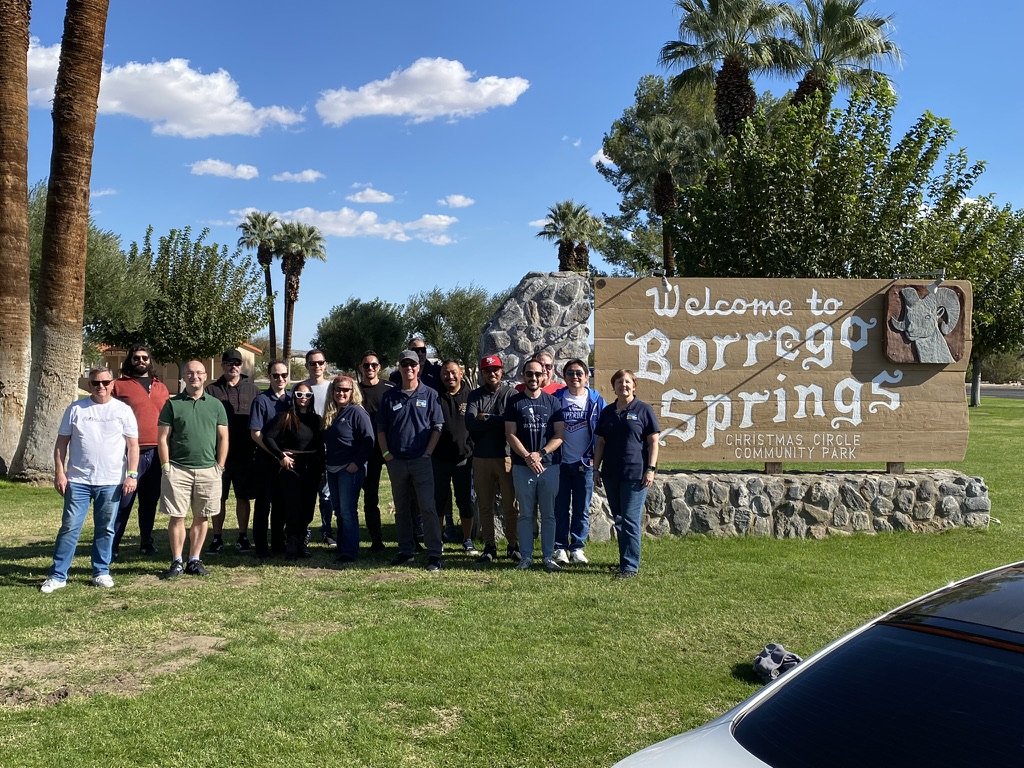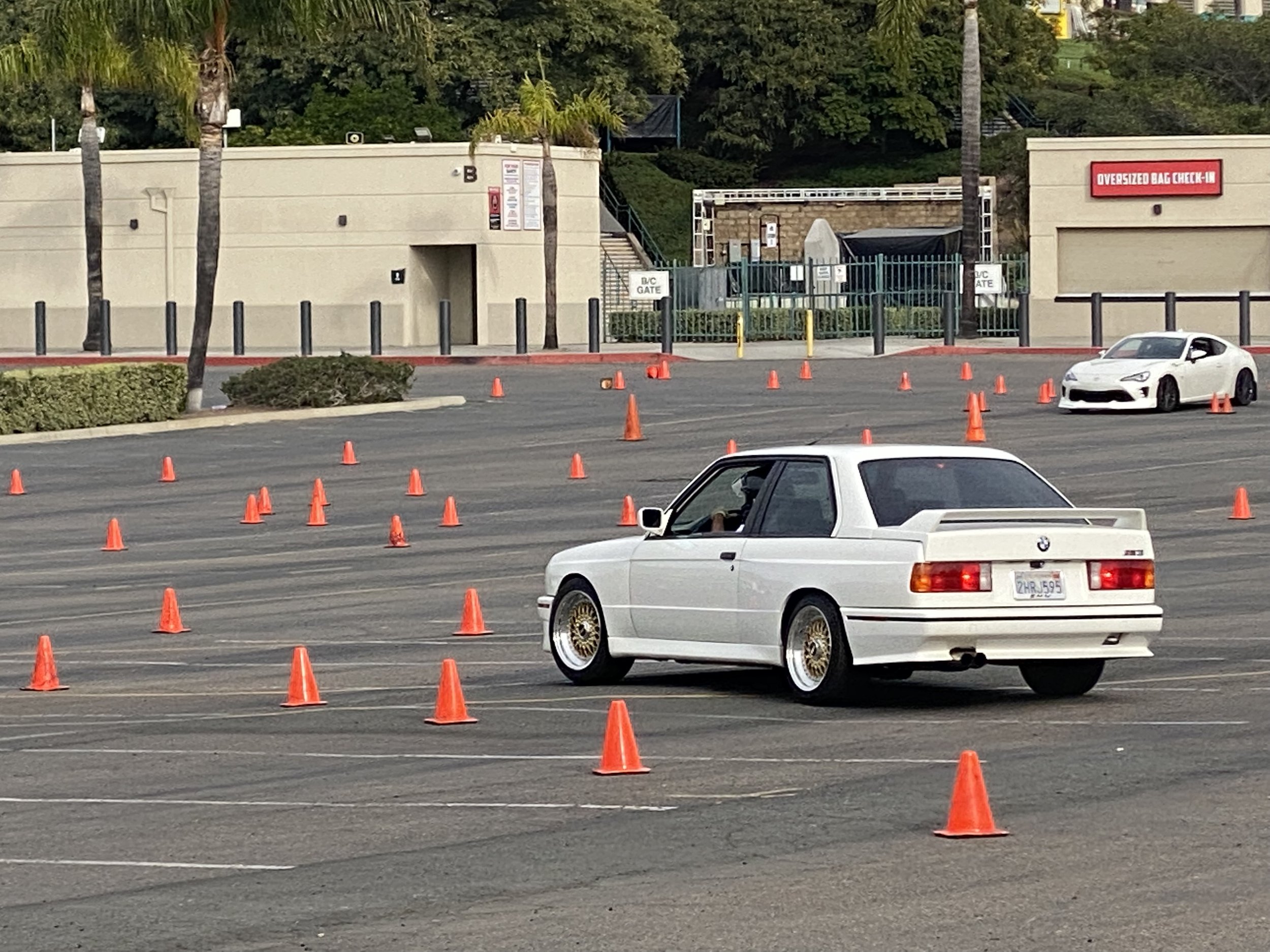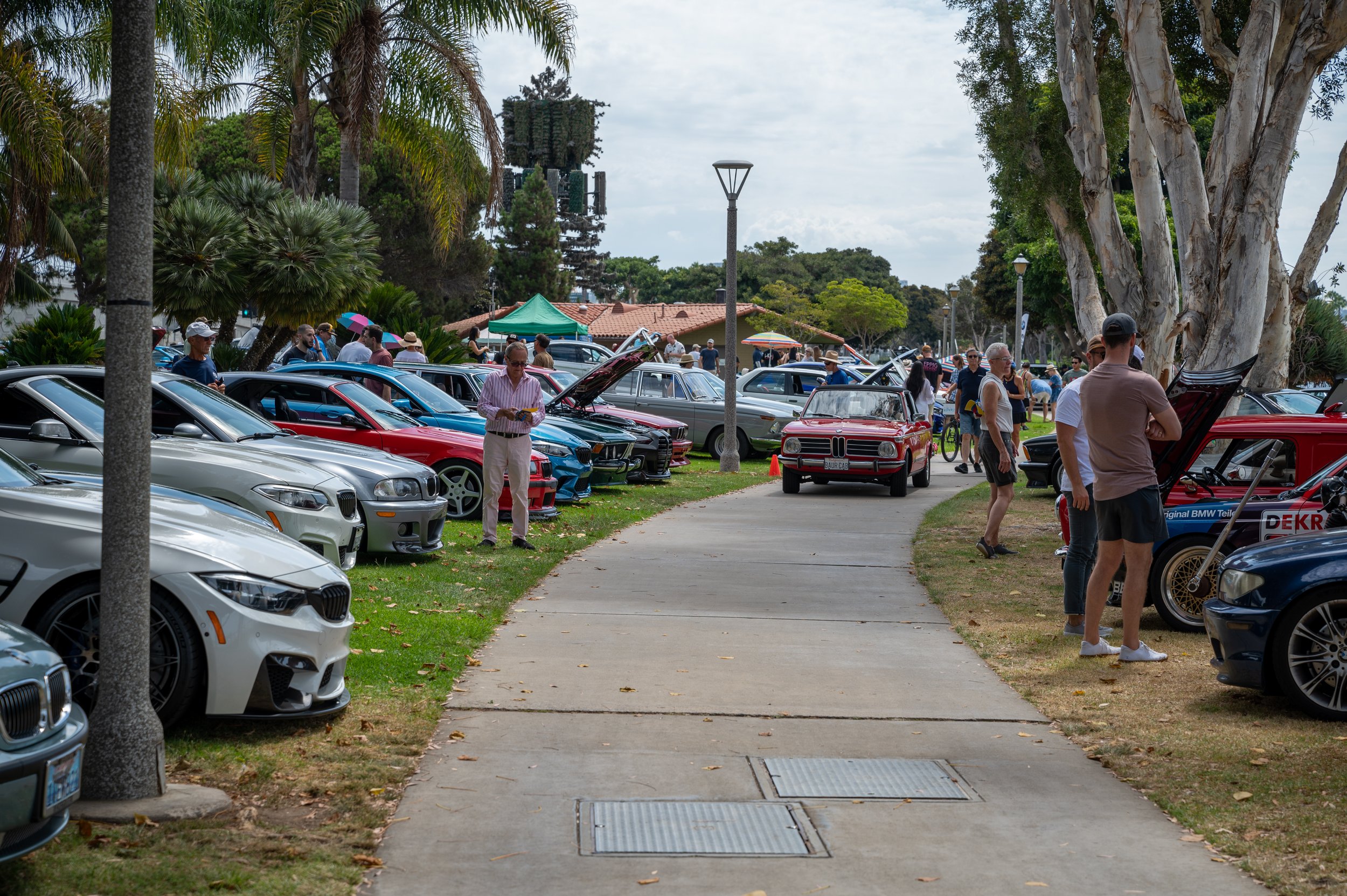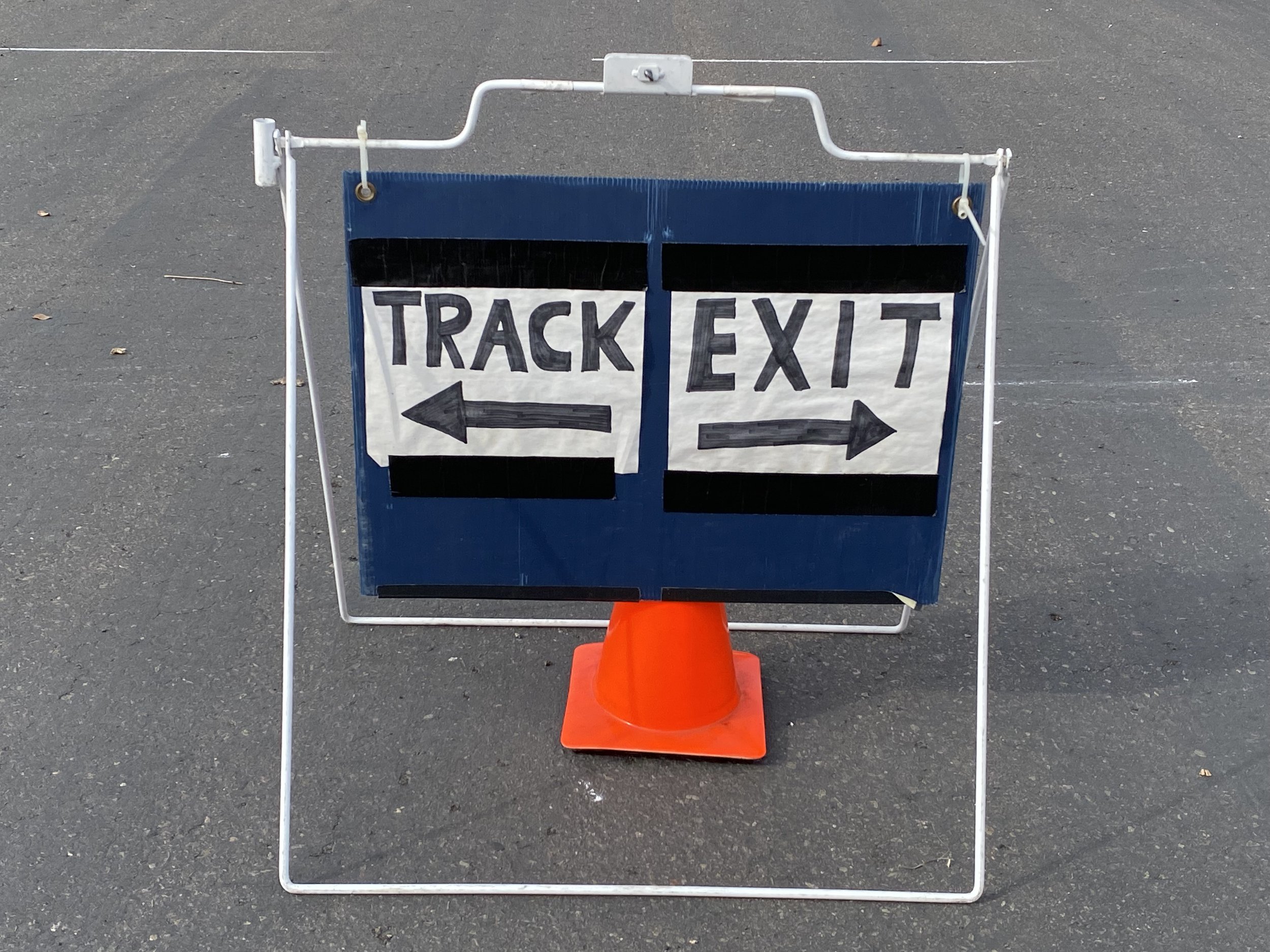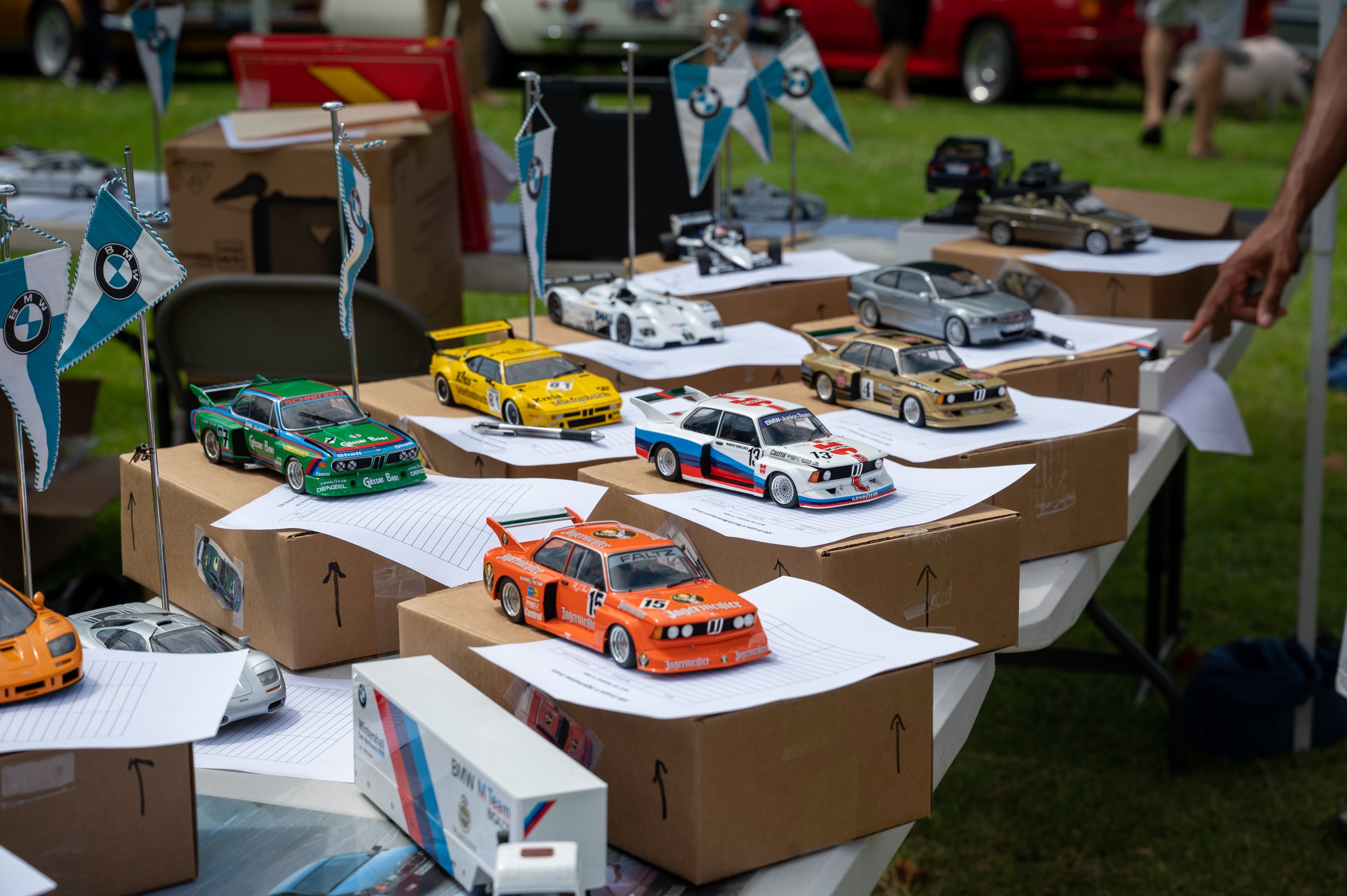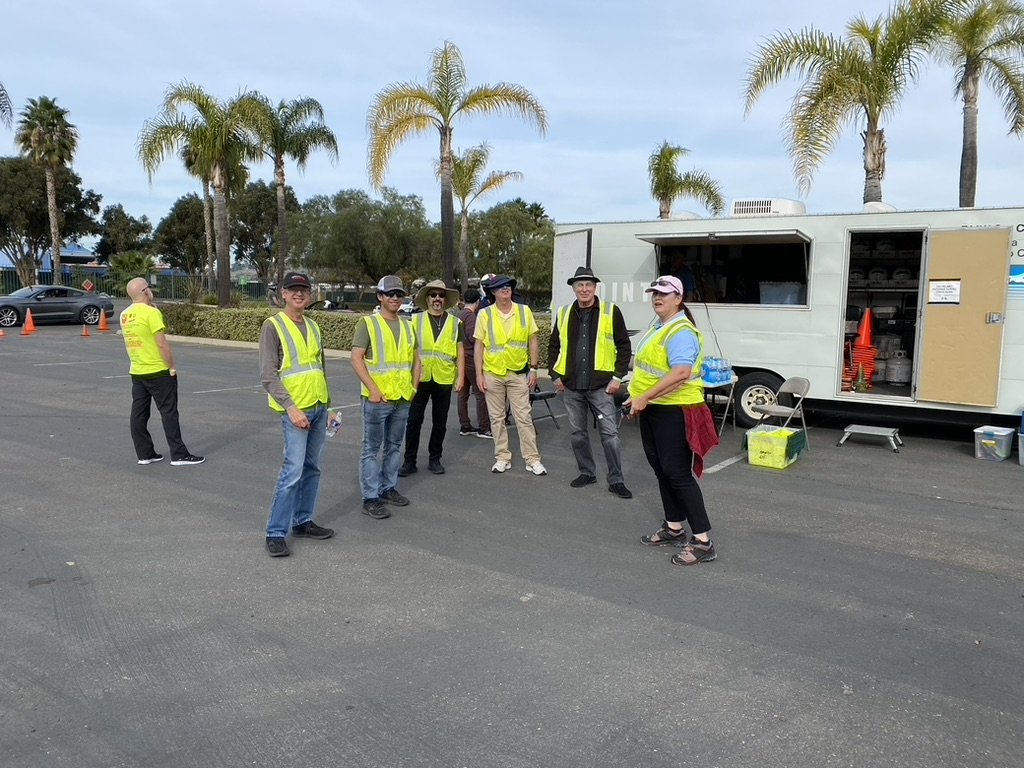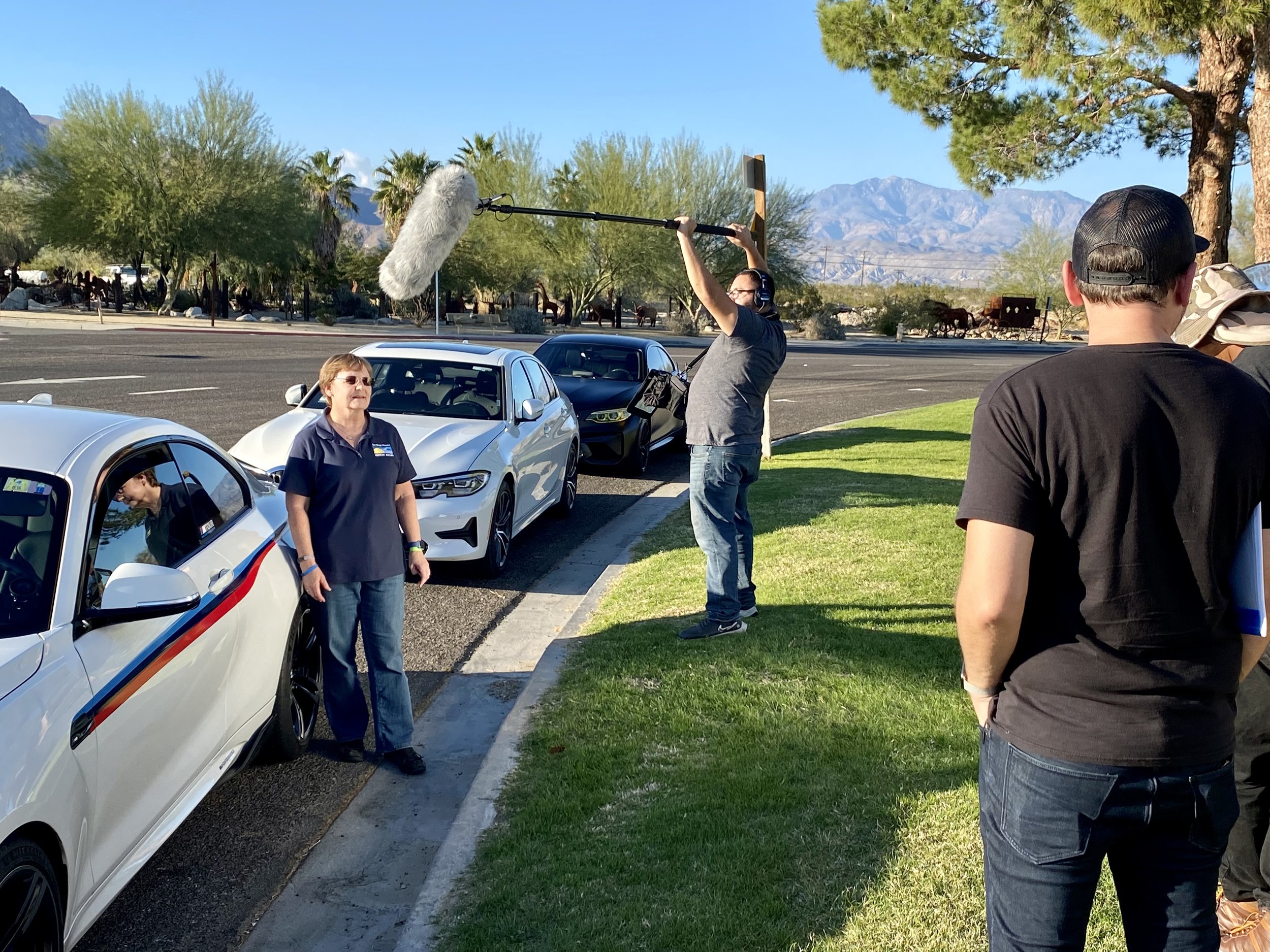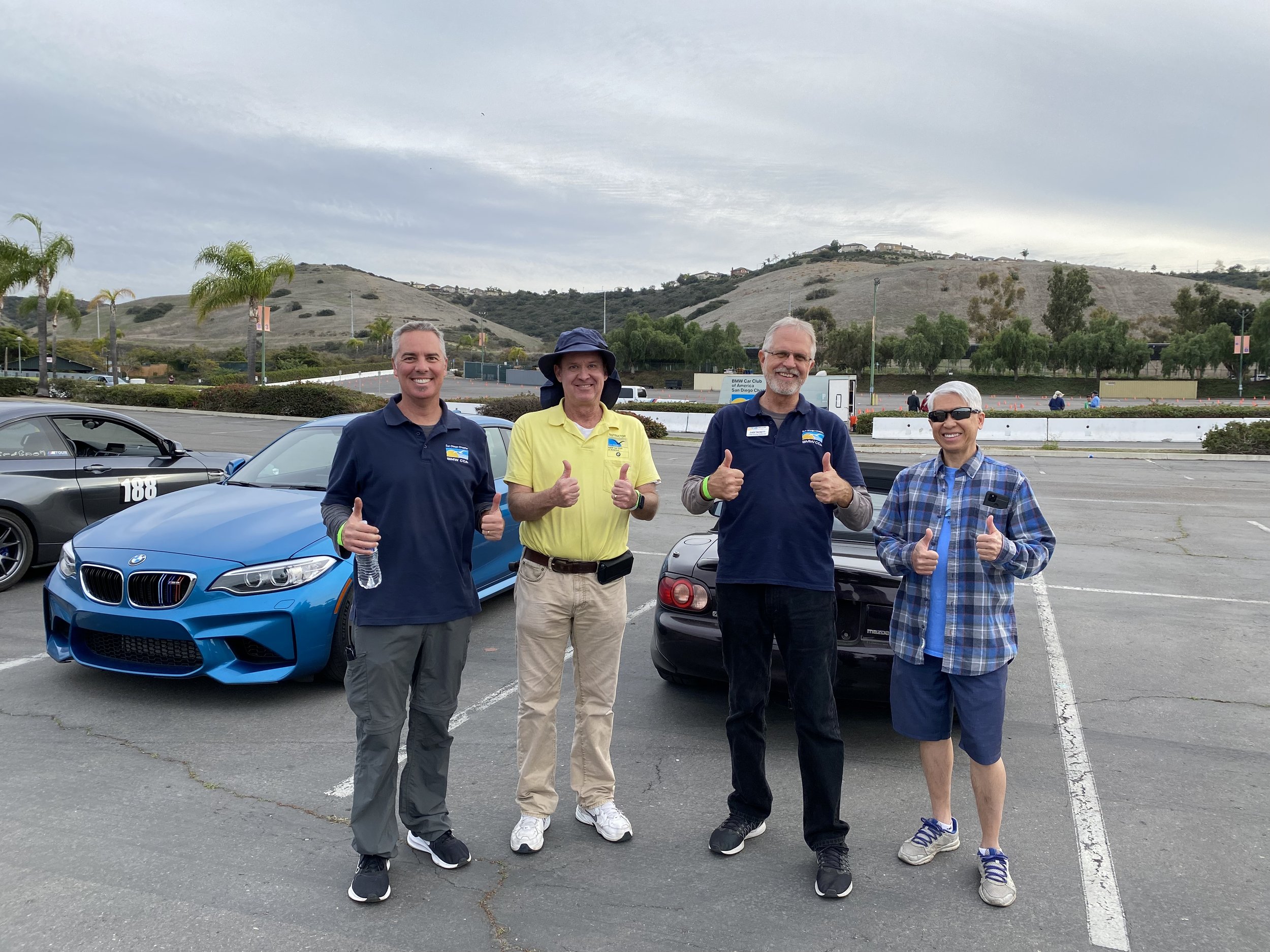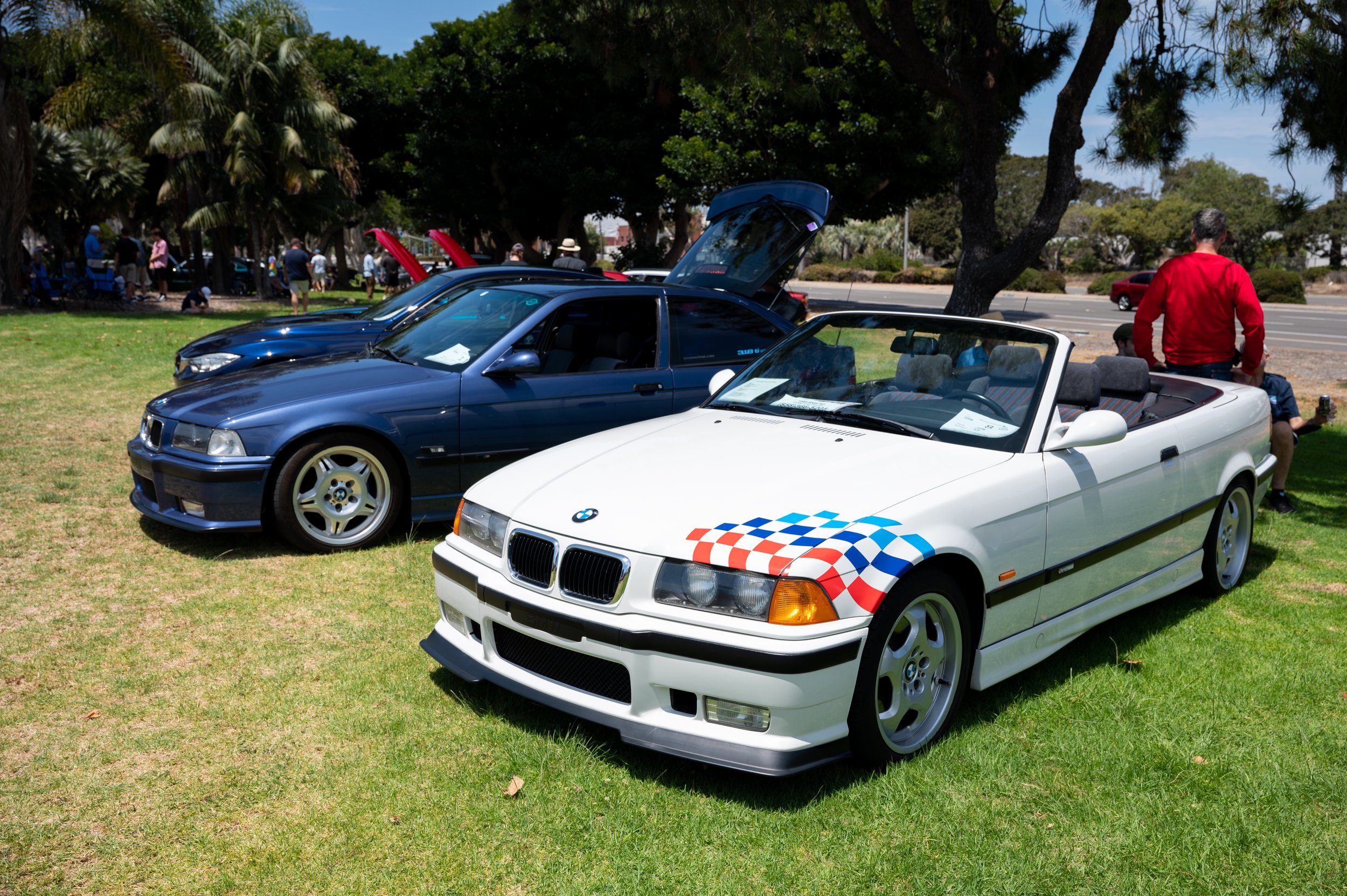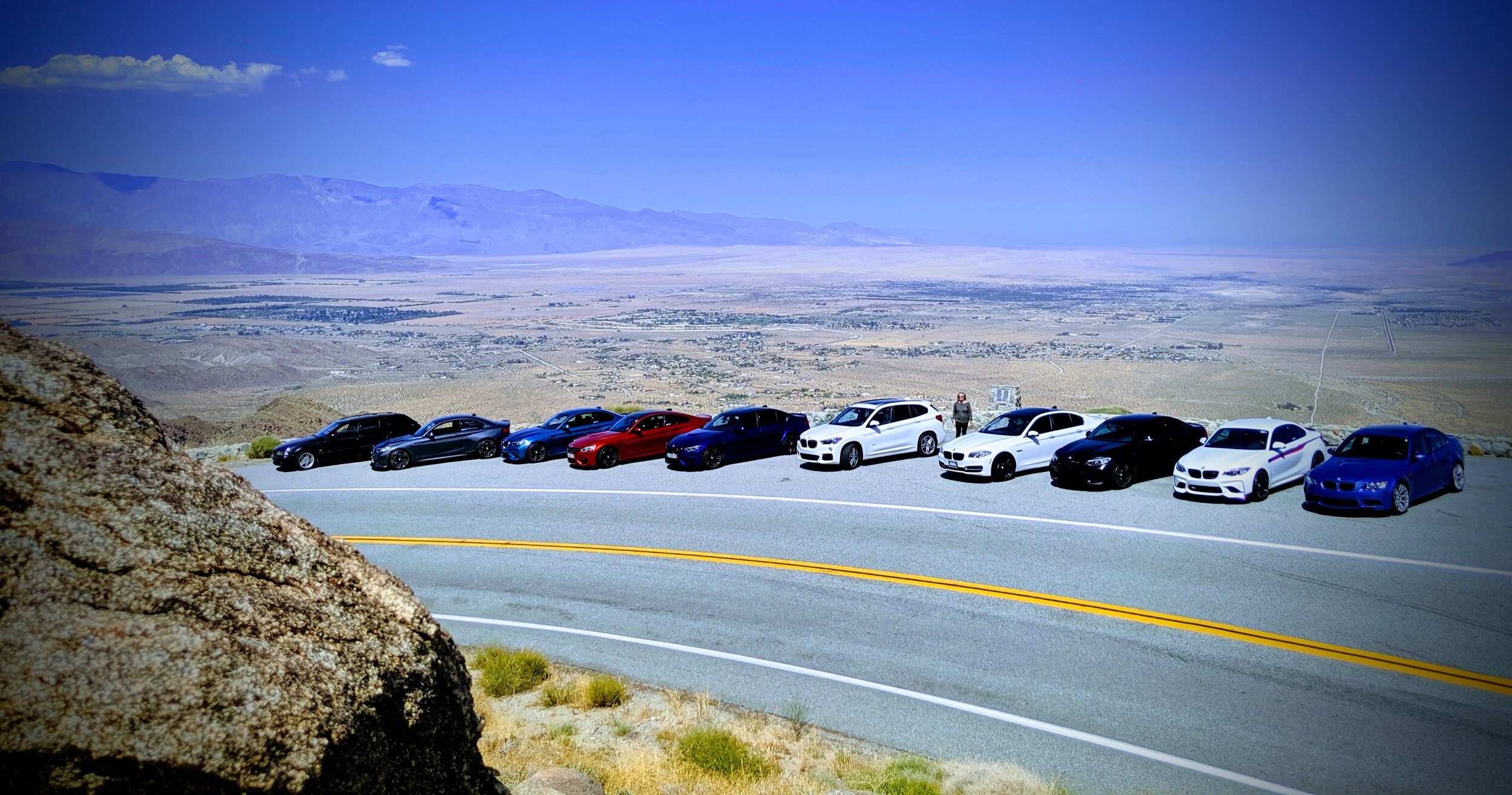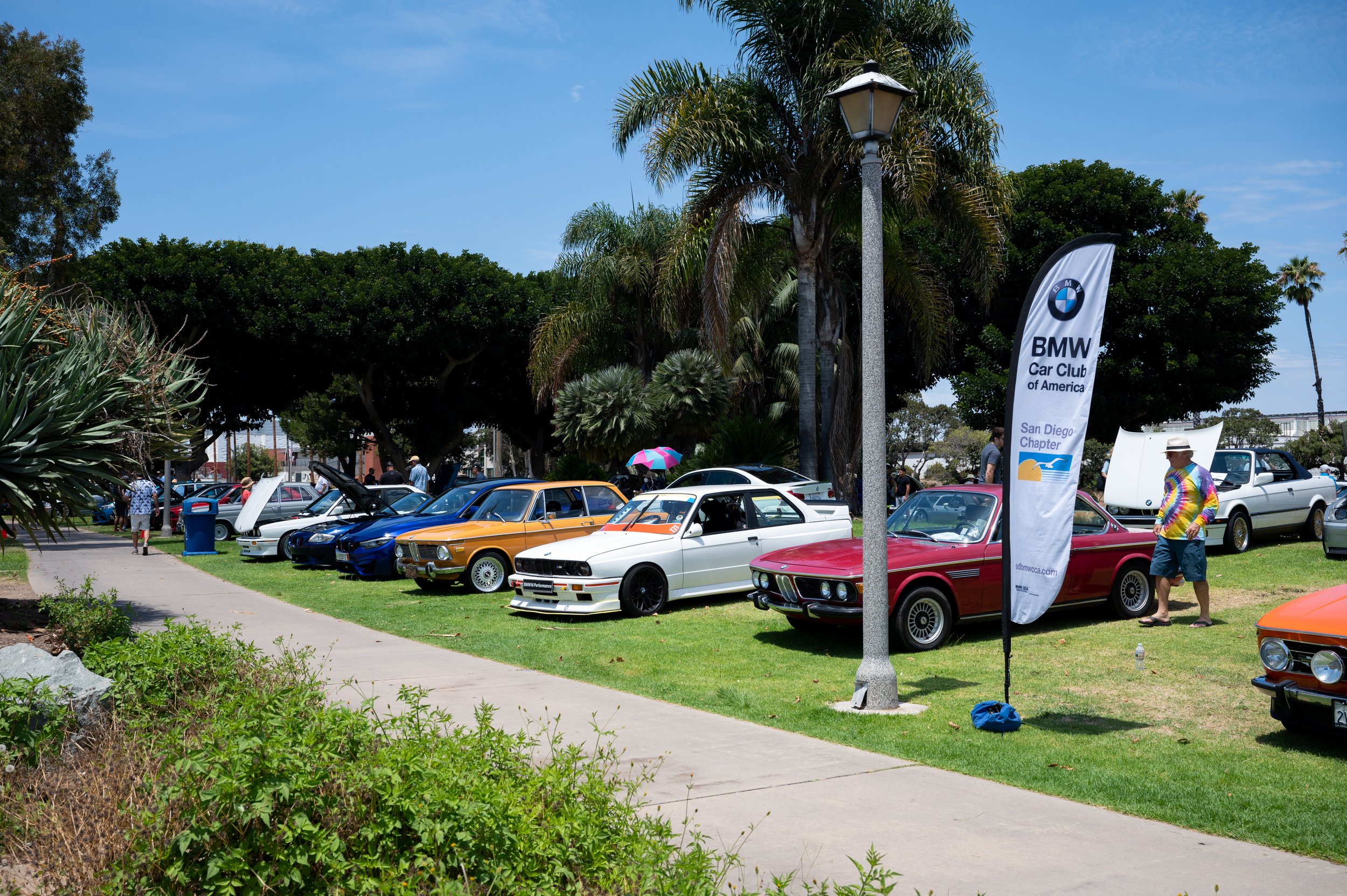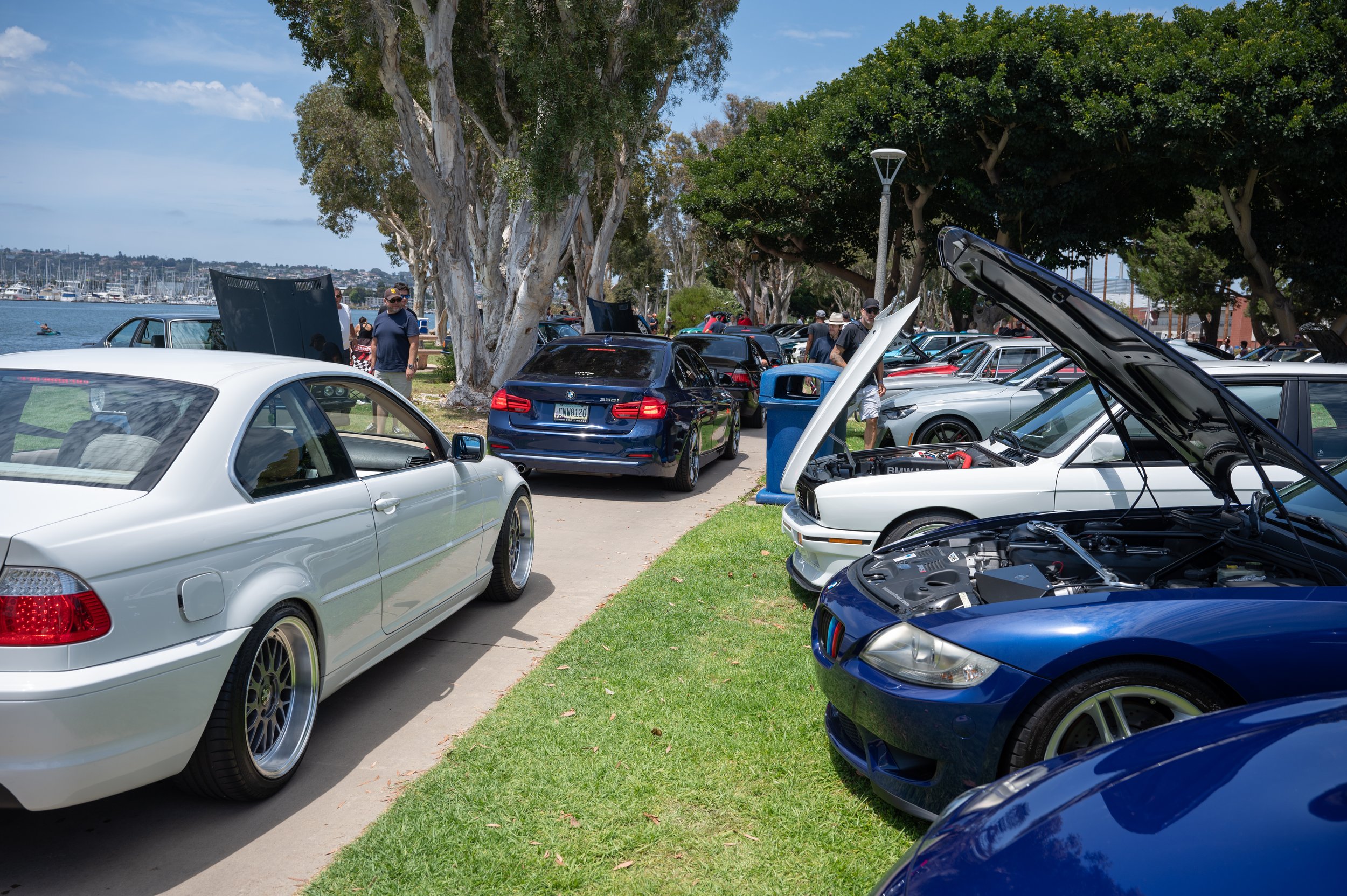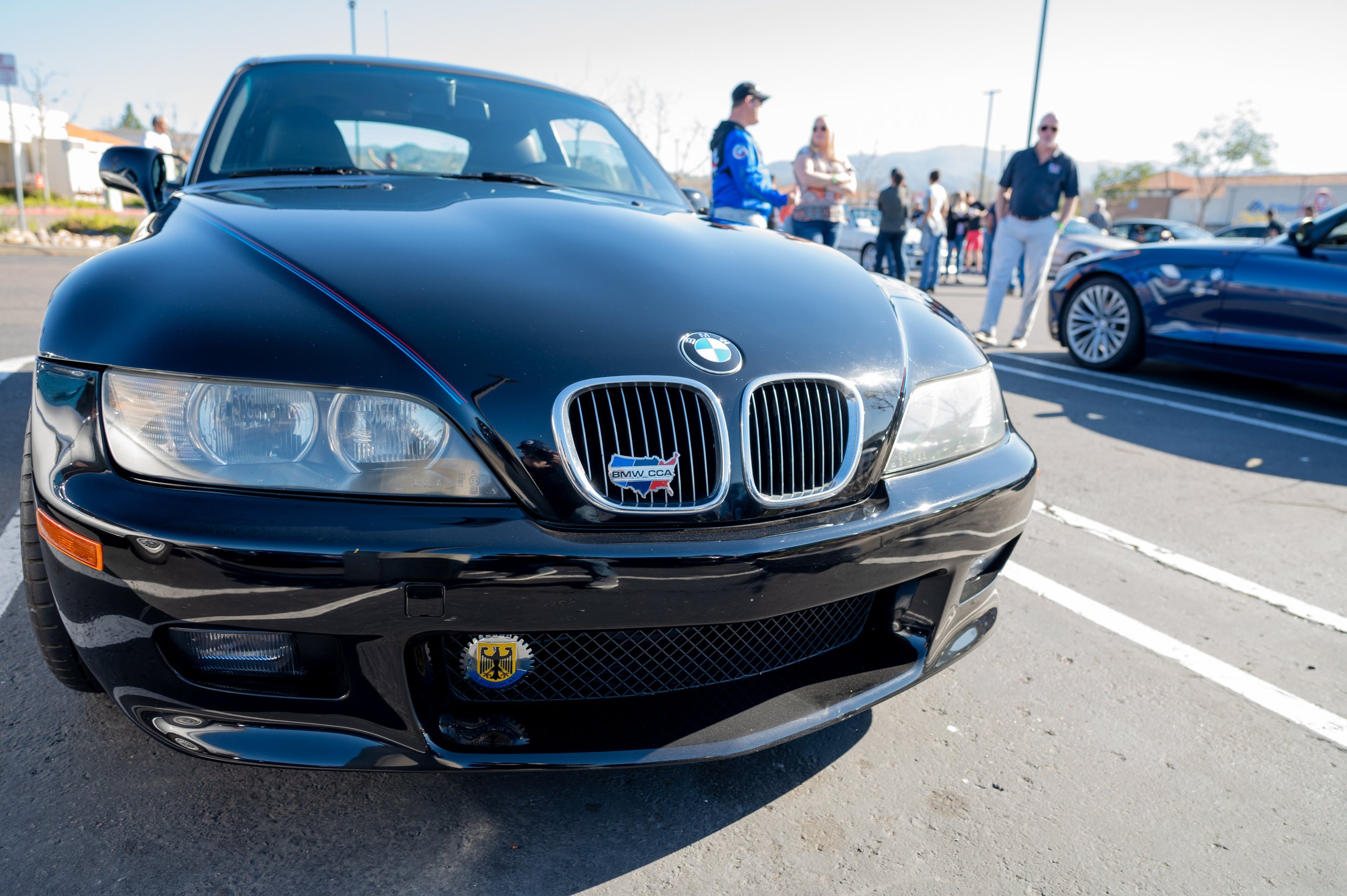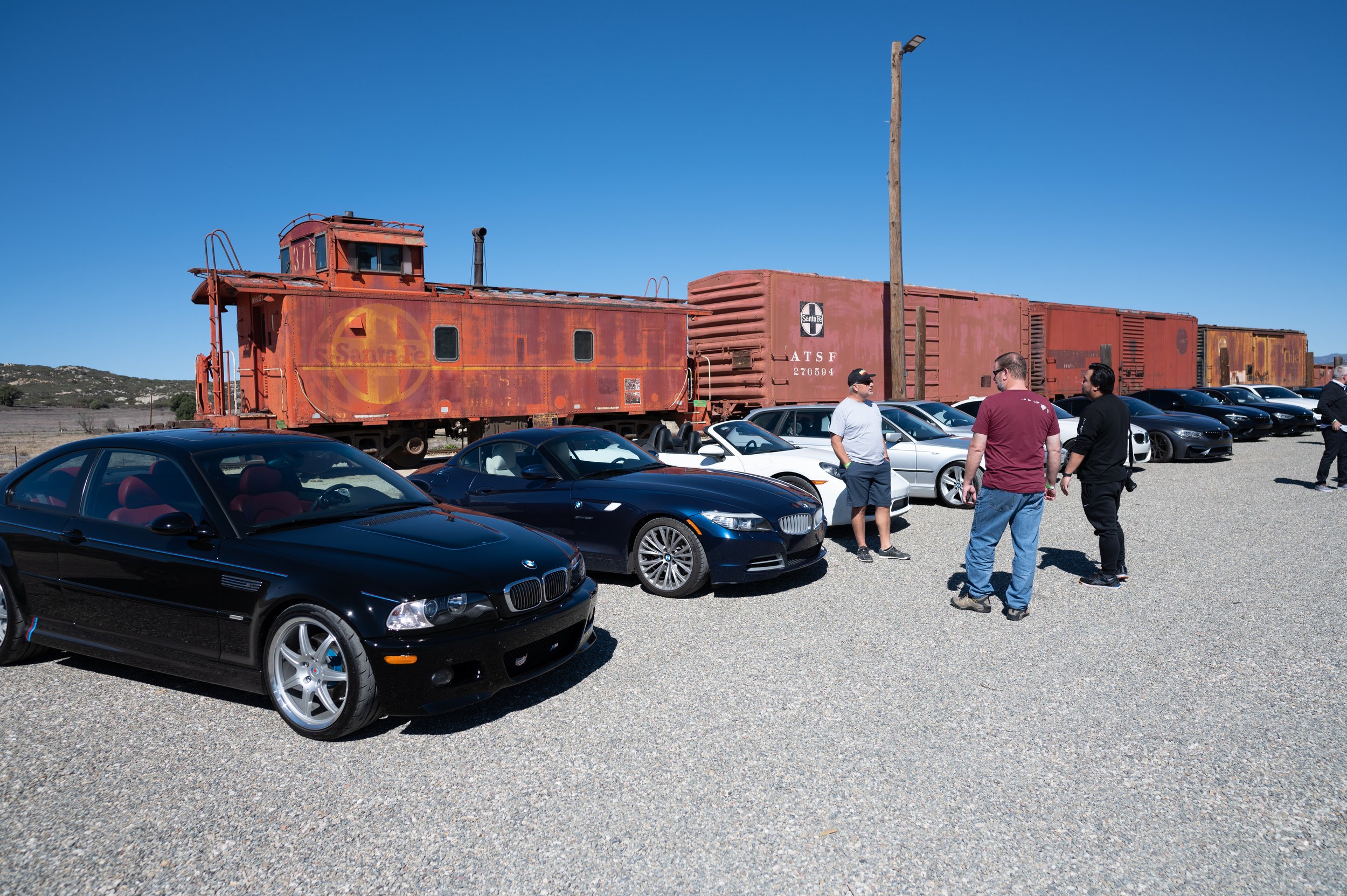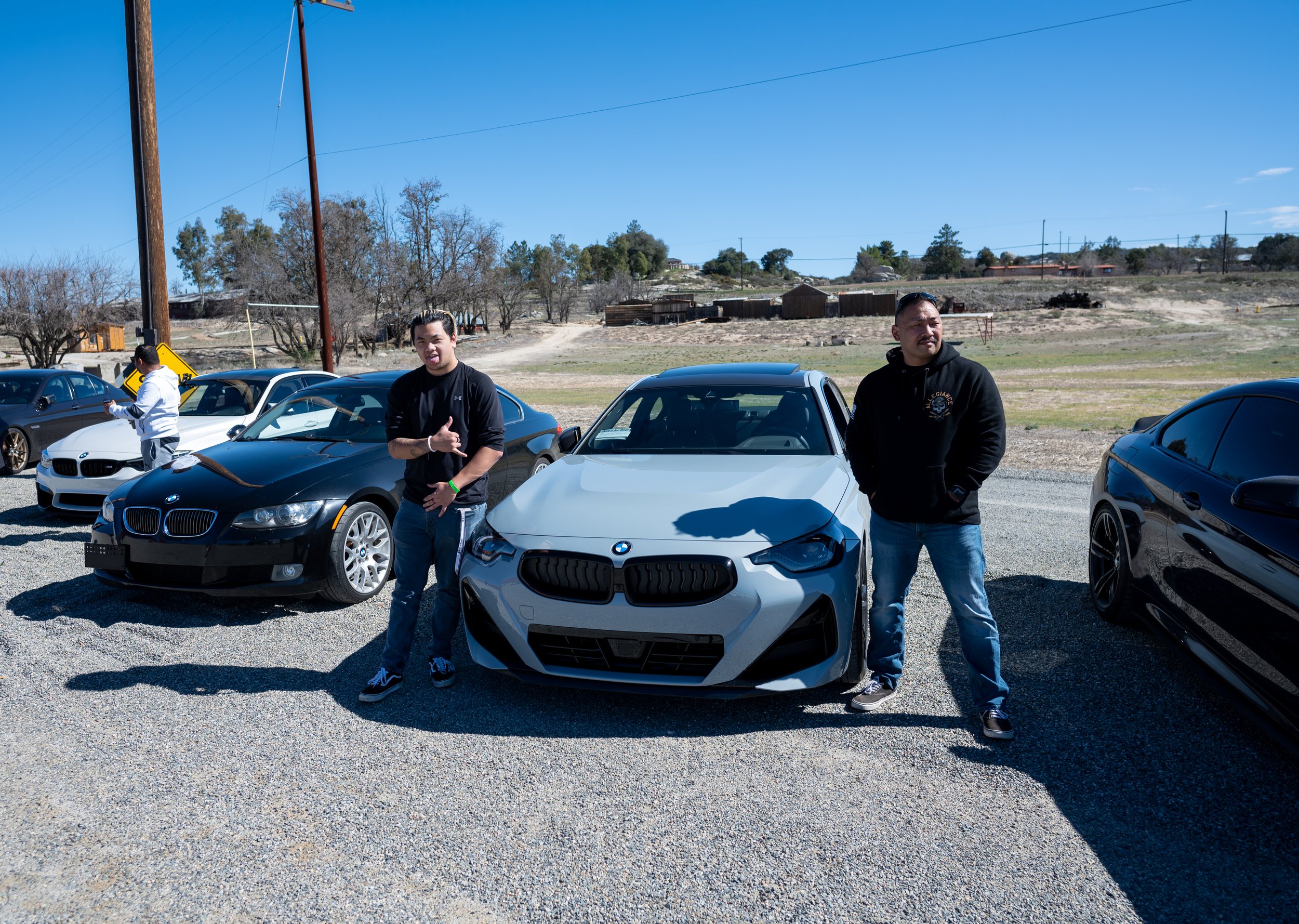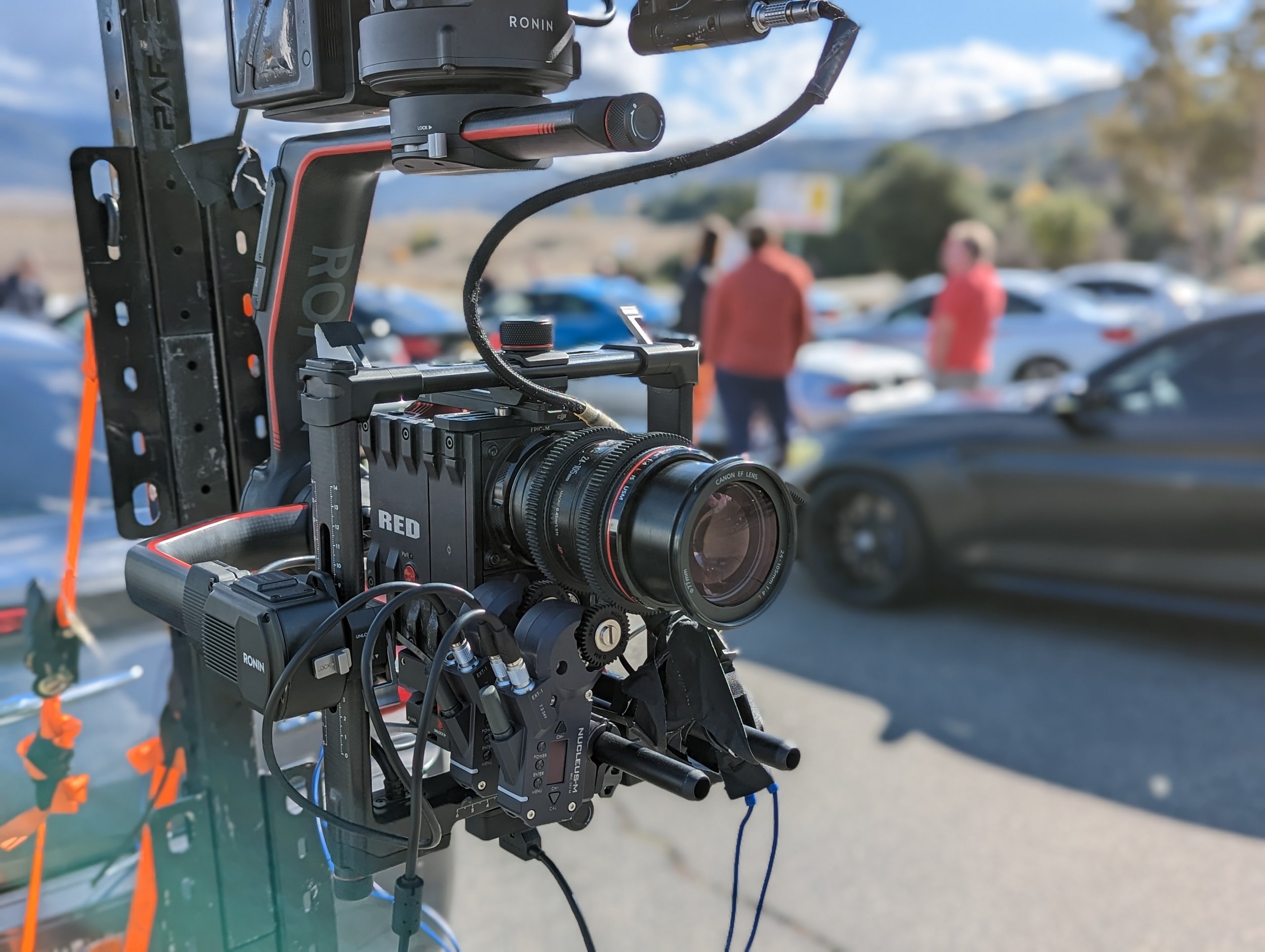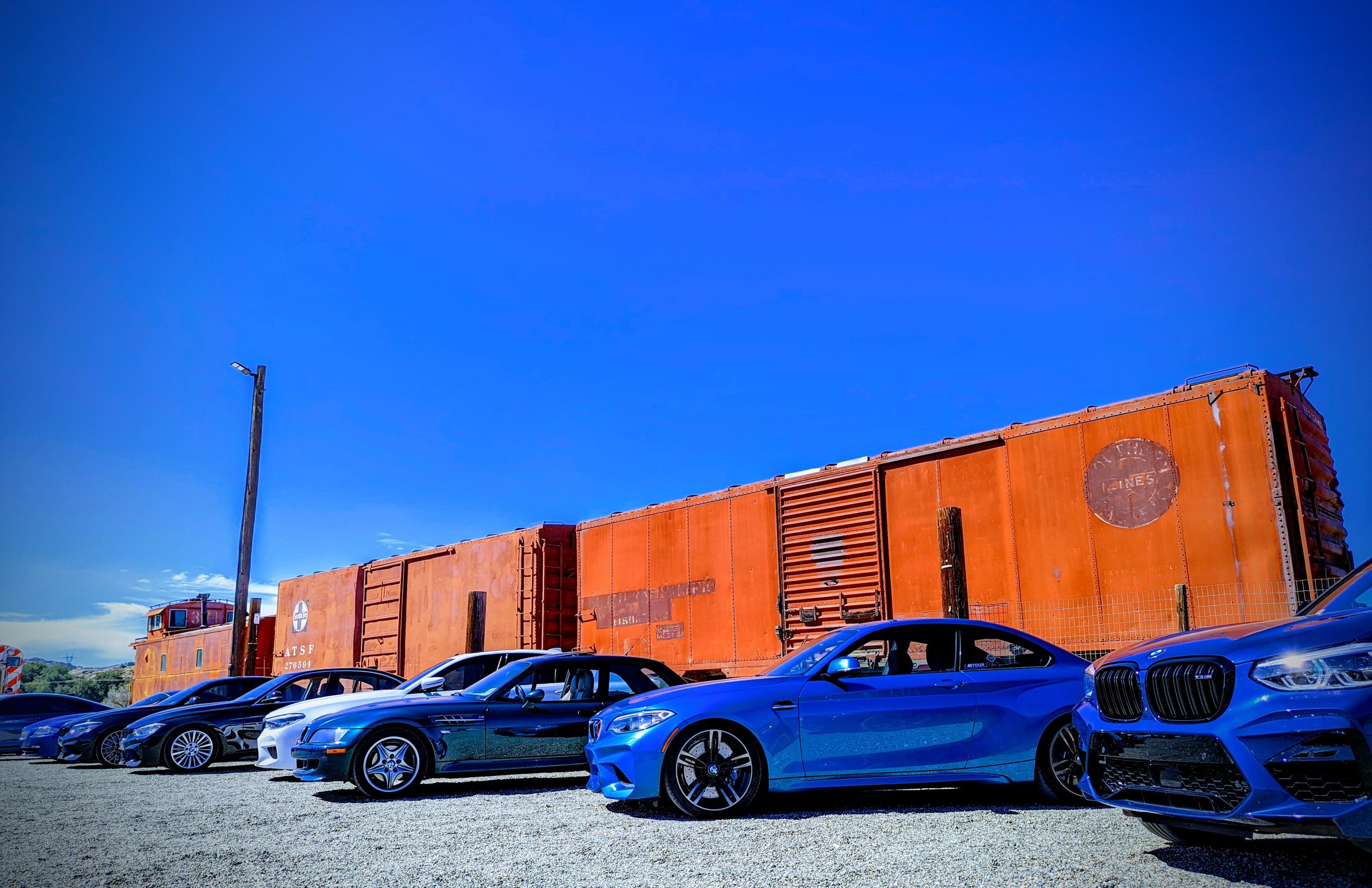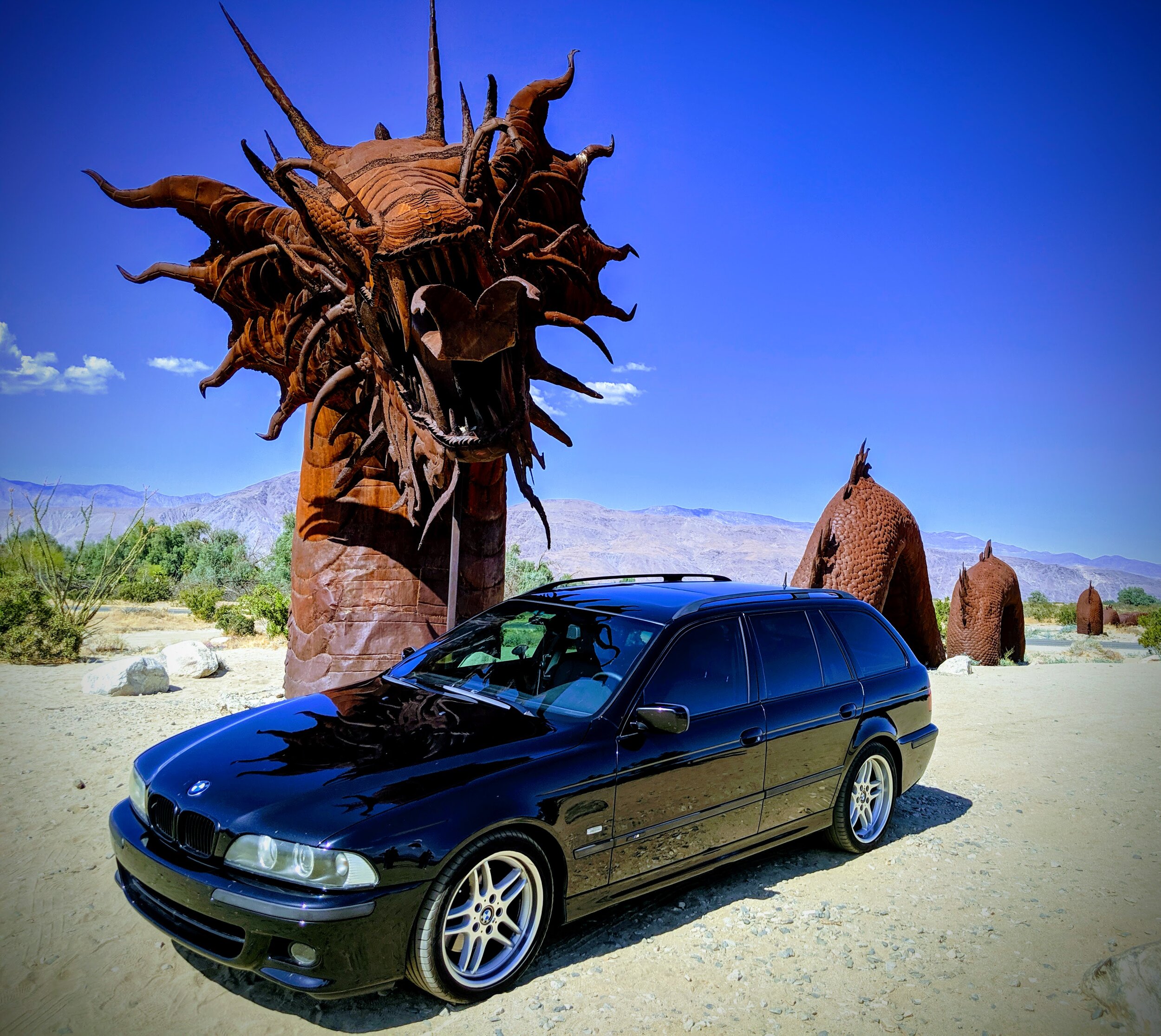Deep Dive - A chat with Driving School Director Lisa Goehring
/by Matt Gage
I first met Lisa Goehring at my very first BMW CCA event in December of 2016, the same time I met our Autocross Director, Greg Uhler. We all bonded over our new M2s. While I’ve been around, Lisa has been our board secretary, newsletter editor, communications director, and president. Now, Lisa is our High Performance Driving Events (HPDE) Director. I chatted with Lisa about her experience with our chapter’s HPDE program both as a participant and now running it. Thank you so much Lisa for stepping into an important role on one of our biggest programs for the chapter.
Photo by Roger Gong of Central Cal Chapter
How long have you been involved in our High Performance Driving School (HPDE)?
Probably since about 2007 was my first time on track as a participant. A few years in I offered my services as a designer to help with some of the graphics for the events. At the time, Rich Gehring was doing a lot of tasks for the events such as getting shirts and swag. When he was gone, I stepped into that role on a regular basis. Then, Anne Littrell needed help soliciting sponsorship and at the time I was the Advertising Director for our chapter so it was a natural next step for me.
I was involved in graphics, marketing, and sponsorship efforts until the previous Driving School Director, Seth Hanson, stepped down in 2021.
What attracted you to HPDE?
I’ve gone to spectate races at different tracks and thought it was really cool that I could actually take my own car and go out and drive on the same tracks where I’d watched various races. I thought it would be pretty fun. It was also shortly after I got my first BMW so the car was new to me and I’d never had anything like a performance car before. I wanted to learn how to drive it better, improve my driving, and just have fun. I was meeting some cool people in the club and heard about the event so I started going.
What tracks have you driven on?
- Buttonwillow Raceway
- Reno-Fernley Raceway
- Sears Point Raceway
- Road Atlanta
- California Speedway
- Road America
- Chuckwalla Valley Raceway
- Willow Springs International Raceway
- Streets of Willow Springs
- Laguna Seca Raceway
- Spring Mountain Raceway
- Nürburgring Nordschleife, Germany
- Circuit de Spa-Francorchamps, Belgium
- Circuit Zandvoort, Netherlands
- Pittsburgh Int'l Race Complex
- Thunderhill Raceway
Photo by Roger Gong of Central Cal Chapter
Why did you consider becoming HPDE Director for our Chapter?
After the covid hiatus, we needed someone new to step into the role and there weren’t any other volunteers. I was Communications Director for the chapter at that time and I hated to see us lose this legacy event that we’ve done for over 30 years and I was willing to try it.
Who is the target audience for HPDE? Who should consider participating in these events?
Anybody who enjoys performance-type driving and improving their driving skill—all ages, men, women (we’d love to see more women out there!), it’s open to everyone interested in having fun with their car. You can go a lot faster than you can on public roads and it’s much safer as well! And for people that autocross, HPDE is a great next step because you can go even faster.
Photo by Roger Gong of Central Cal Chapter
Speaking of Autocross, what other ways does HPDE differ from Autocross?
HPDE is held on a race track as opposed to a parking lot littered with cones. The space is a much larger environment so you can drive at faster speeds. There are opportunities to drive famous tracks or local tracks. Like autocross, you get personalized instruction with an in-car instructor but you also get classroom sessions so it’s a deeper dive into higher level performance driving. HPDE is also at least a two-day event so you have significantly more track time and time with an in-car instructor.
As a newcomer to HPDE, what are the prerequisites as a driver to attending my first event?
All drivers must have a driver’s license that doesn’t require someone else to be in the car with them for the license to be considered valid. Any driver under 18 must submit a signed Parental and Minor Release Waiver. There are no other requirements other than a willingness to be open to learning and explore your comfort level in a safe environment.
What are the prerequisites of my car?
Your car has to be in good working order. It should be well maintained with nothing loose in the engine bay, under the car, or inside the car. Some, but not all convertibles, are allowed. Only certain SUV-style vehicles with a low enough center of gravity are allowed. The car can be street legal or a dedicated track vehicle but no open-wheel vehicles are allowed. All makes are welcome, not just BMW. It needs to have a passenger seat, good tires and brakes. Have proof of brake fluid service within a specified timeframe of the event and needs to pass a tech inspection.
Photo by Roger Gong of Central Cal Chapter
Can you go into more detail about the Technical Inspection?
We provide a detailed list of things on a form that you can download and take to a qualified mechanic, which we call a tech inspection. Some people can perform their own inspection if they feel they’re qualified to sign-off on their own vehicle but people usually take their car to an independent shop (such as HQ Autosport, Independent Motorcars, Charlie's Foreign Car, or Oceanside Motorsports) or dealer. The list has you check the suspension, make sure there are no leaks, check all the fluids, etc.
The tech inspection is done by the participant before arriving at the track and the burden is on them to ensure the car is in safe working order. On the day of the event at the track, the instructors would do a basic walkaround of the vehicle before agreeing to ride as a passenger.
What safety devices are required?
Drivers must wear a helmet that meets specific SNELL or FIA standards at the time of the event. Regular three-point seatbelts that normal street cars are equipped with are fine. If you have a multi-point harness, there are some specific requirements that the harness and seats must adhere to which are spelled out in the CCA Driving Events Operations Manual.
Seems like there are a lot of requirements and specifications to keep track of. What resource can I use to make sure I’m on top of everything?
When you register for our HPDE through Motorsport Reg, we list all of the requirements and specifications and you can reference to make sure you haven’t missed anything. Everything is there but if you have more questions, you can always contact us at info@sdbmwcca.com to ask us directly.
What can I expect will happen to my car during an HPDE?
You can expect some tire wear and a little brake wear, at first. This can generally increase as drivers gain experience and increase their pace.You may get some tire rubber marks or rock chips. If you don’t have Paint Protection Film, people may tape up the front of their car.
Photo by Lisa Goehring
What is the worst case scenario?
It’s unlikely, and happens very rarely at our events, but it is possible that you might come together with another car or run off the track and maybe hit something solid. It’s possible and in my 16 or so years of attending BMW CCA HPDEs, I’ve seen some cars run off course and get dirty or maybe get a scratch from hitting a bush. There was only one incident I can recall where there was car-on-car contact due to a passing miscommunication.
Mechanical issues do happen when things break on cars due to the high stresses, but I’ve never seen anyone wreck their car in an incident.
Drivers can get specific track insurance to cover an HPDE which provides some extra peace of mind because most auto insurance policies do not cover anything that happens on a closed course like a race track.
What are the rules for passing?
For all of our run groups, beginner to experienced, we always require permission to pass another car. The leading car would give a hand signal (called a “Point-by”) to the car behind to pass. It’s a cooperative process to pass. For example the leading car may signal the trailing car to pass on the inside at the next turn, maybe lift off the throttle a little bit and then pull back in behind after the pass is completed. There would be one Point-by for each passing vehicle in the event of multiple vehicles needing to pass.
Depending on the driver’s run group, there are different zones on the track where passing may be allowed and they are clearly communicated in the driver’s meetings.
Photo by Lisa Goehring
What other things do you talk about in the Driver’s Meetings?
There’s always an “All driver’s meeting” at the start of the day that covers safety protocols, describes the flags used, passing zones, and other general information about the event.
Then drivers break up into their separate run groups and those have specific classroom sessions where information will be reiterated in the context of that run group.
What is riding with an instructor like?
An instructor is assigned to every student in the novice and intermediate groups and they’ll ride with the student throughout the event. They’ll be assigned to one instructor on the first day so they can spend significant time working together as a pair. On the second day, they are assigned a different instructor just for a different perspective.
The instructors have to figure out the best way to communicate with the student so the instructors need to adapt to the needs of the student. It’s on the instructor to figure out and identify, for example, if the student learns better with visual signals versus other methods. Despite sitting next to each other in the car, the student and instructor use in-helmet headsets to communicate while on the track.
It’s up to the instructor's discretion to sign-off on allowing the student to drive solo if the student has demonstrated a progression in driving ability to the point where they no longer need an instructor.
What does it take to put on an HPDE for our Chapter?
You have to get a team organized including a course steward, chief instructors, and 25–30 instructors for the events. Need people to help plan and assist during the event and at trackside such as corner workers and professional flag workers. Need to reserve the track far in advance, make sure we have all the equipment needed for the weekend, and obtain event insurance. We need hotel reservations, event registration is posted online, ensure the event is promoted in various media, and possible swag ordered. Students and instructors need to be assigned, cars are assigned numbers, name tags and lanyards are provided. Sponsorship is very important to try to offset the costs.
We have about 9 core people on the team that meet weekly, months in advance, to organize the event: myself as the director, a couple chief instructors, people from other chapters such as Golden Gate and Central Cal, course steward, and key volunteer workers.
On the evening prior to the event, such as Friday night, we try to get most people checked-in before getting to the track: they sign the waiver, get a wristband, registration packet, shirts, numbers, verify their helmet is current, etc to save time the next morning at the start of the event. It can be pretty chaotic getting everyone checked-in that night, but it’s also a good opportunity for members to reconnect and socialize.
On Saturday morning, around 7am right when the track gates open, there is a safety overview of the facility and track itself to make sure there are no hazards or any issues. The track will be inspected and set up by more experienced instructors, setting up cones to give visual indicators to the students about the apexes, turn-in points, passing zones, etc. Tents are set up for the different run groups. Water is made accessible. Instructor/student assignments are made. The course steward ensures the crew is set up in the tower to track timing and to communicate with the corner workers about when to display flags, etc. There is an instructor’s meeting and an all driver’s meeting that take place that morning as well. About 9am is when the first session starts.
Photo by Roger Gong of Central Cal Chapter
After not having one in so long, how did our first HPDE on the weekend of May 19th 2023 at Buttonwillow go?
It went well! We had pretty full participation with people coming from all over the state, and not just San Diego Chapter members but also LA Chapter, Golden Gate Chapter, Central Cal Chapter, and even people that came from Arizona and Nevada. It was great reconnecting with people after not seeing so many of them for a while. We had great weather, a bit warm. People seemed happy and satisfied about how the event was run. There was a lot of track time: we were running about 20-25 minute sessions and there were five of those each day. This year, we also had an Instructor Training School on Friday that went very well, resulting in seven new track instructors for our region. It was pretty crazy from the administrative side but the participants had a great time.
We had about 67 drivers, 35 track and classroom instructors, 8 instructor candidates, and 9 key staff/volunteers.
How much did the event cost?
Apart from paying the BMW CCA membership fee, the two-day student registration cost was $525–$575 (with an optional add-on if you wanted to drive on Friday) plus food and any personal expenses.
The cost to host the event was about $50,000 and we were pretty close to breaking even.
What do you think HPDE means to our Chapter?
It’s a great opportunity for our members to explore performance driving in their cars in a safe and controlled environment and to enjoy driving. It’s a chance to explore the limits of your car and yourself as a driver. This event has been a staple in our chapter for 30+ years and a lot of our members look forward to it. It’s a good activity to offer our membership and can also help with recruitment and retention. We had 10 people become CCA members when registering for the event!
